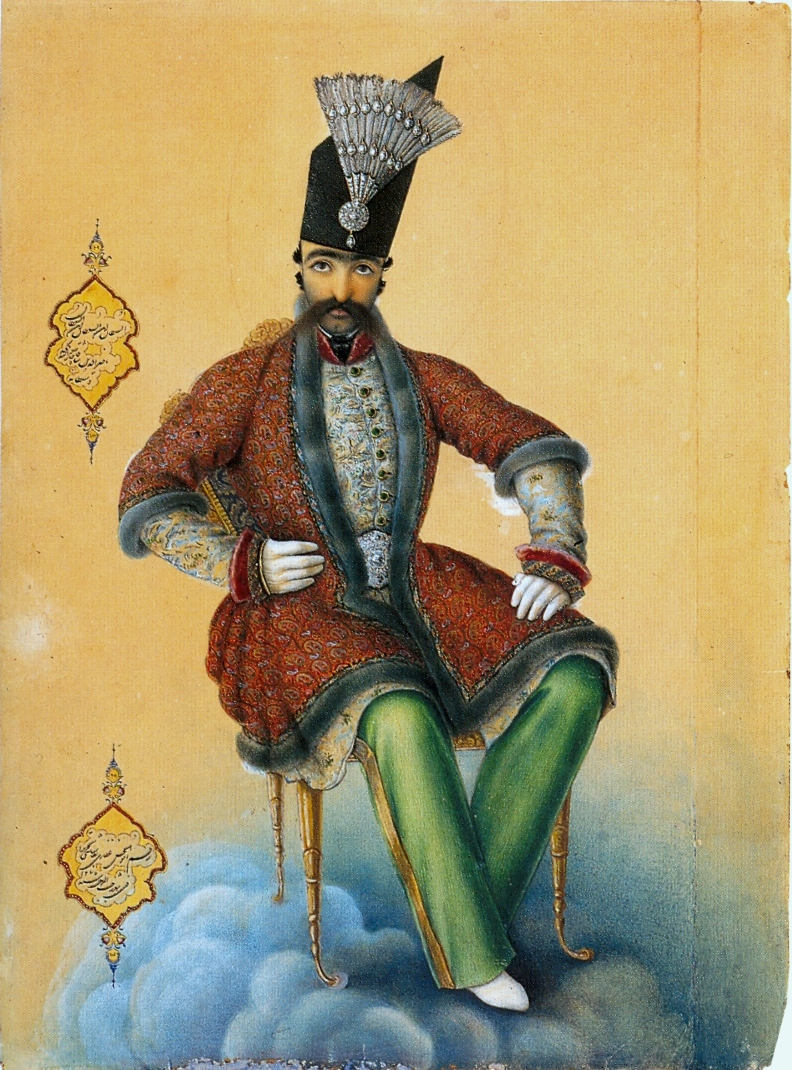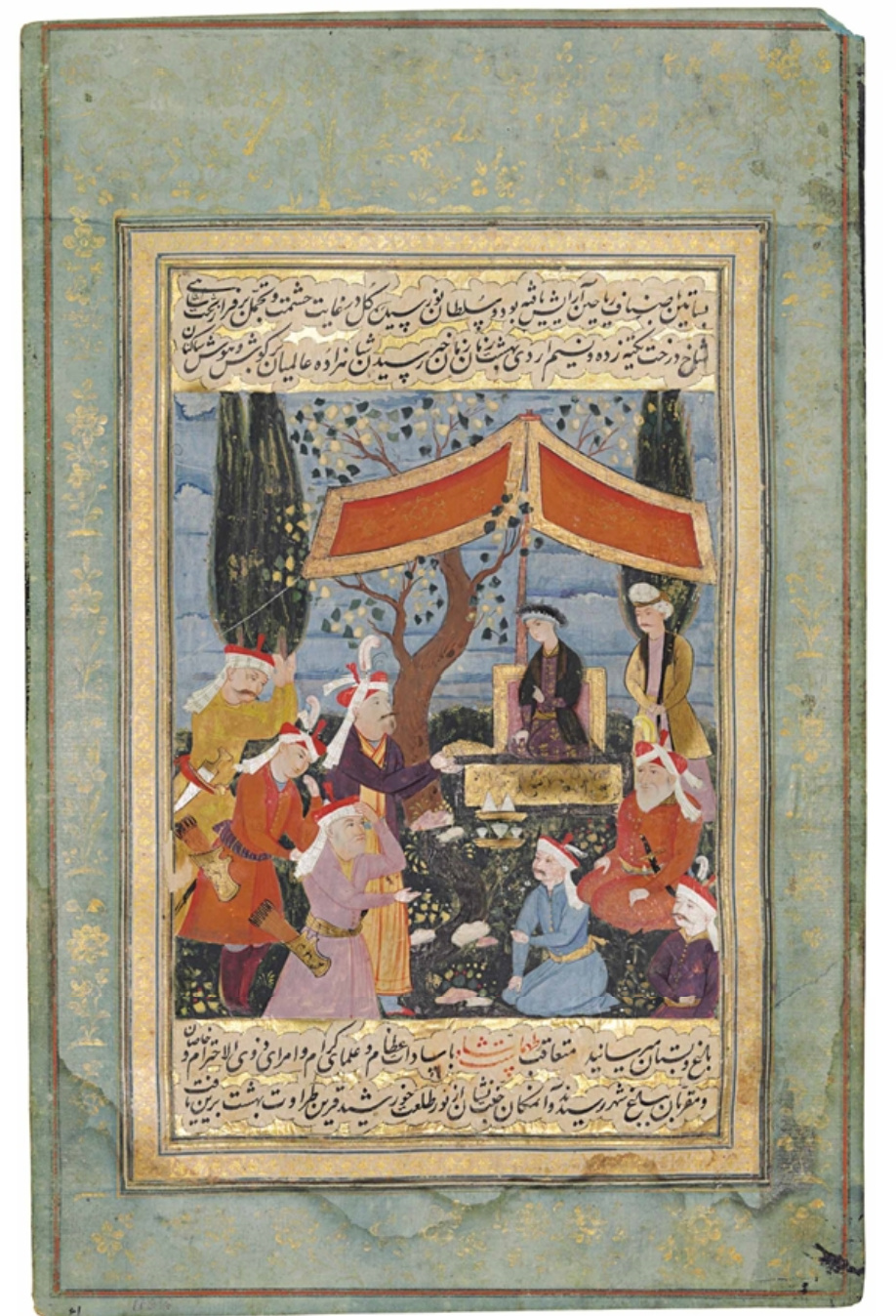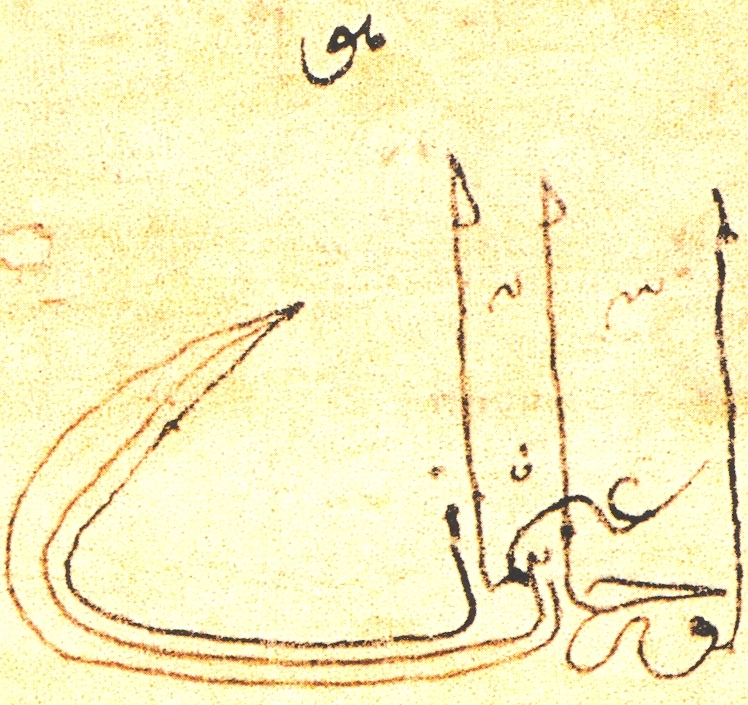|
Naser Al-Din Shah Qajar
Naser al-Din Shah Qajar ( fa, ناصرالدینشاه قاجار; 16 July 1831 – 1 May 1896) was the fourth Shah of Qajar Iran from 5 September 1848 to 1 May 1896 when he was assassinated. He was the son of Mohammad Shah Qajar and Malek Jahan Khanom and the third longest reigning monarch in Iranian history after Shapur II of the Sassanid dynasty and Tahmasp I of the Safavid dynasty. Nasser al-Din Shah had sovereign power for close to 51 years. He was the first modern Persian monarch who formally visited Europe and wrote of his travels in his memoirs. A modernist, he allowed the establishment of newspapers in the country and made use of modern forms of technology such as telegraphs, photography and also planned concessions for railways and irrigation works. Despite his modernizing reforms on education, his tax reforms were abused by people in power, and the government was viewed as corrupt and unable to protect commoners from abuse by the upper class which led to increasi ... [...More Info...] [...Related Items...] OR: [Wikipedia] [Google] [Baidu] |
Nadar
Gaspard-Félix Tournachon (5 April 1820 – 20 March 1910), known by the pseudonym Nadar, was a French photographer, caricaturist, journalist, novelist, balloon (aircraft), balloonist, and proponent of Aircraft#Heavier-than-air – aerodynes, heavier-than-air flight. In 1858, he became the first person to take aerial photographs. Photographic portraits by Nadar are held by many of the great national collections of photographs. His son, Paul Nadar (1856–1939), continued the studio after his death. Life Gaspard-Félix Tournachon (also known as Nadar) was born in early April 1820 in Paris, though some sources state he was born in Lyon. His father, Victor Tournachon, was a printer and bookseller. Nadar began to study medicine but quit for economic reasons after his father's death. Nadar started working as a caricaturist and novelist for various newspapers. He fell in with the Parisian bohemian group of Gérard de Nerval, Charles Baudelaire, and Théodore de Banville. His friends ... [...More Info...] [...Related Items...] OR: [Wikipedia] [Google] [Baidu] |
Khazen Al Doulah
Khazen Al Doulah (19th-century) was a consort of shah Naser al-Din Shah Qajar of Persia (r. 1848–1896).Amanat, Abbas (1997). Pivot of the Universe: Nasir Al-Din Shah Qajar and the Iranian Monarchy, 1831-1896. I.B.Tauris. ISBN 978-1845118280. She was a maid servant of the Shah's mother Malek Jahan Khanom Malek Jahan Khanom ( fa, ملک جهان خانم; 26 February 1805 – 2 April 1873) was the wife of Mohammad Shah Qajar of Persia and the mother of Naser al-Din Shah. She was the ''de facto'' regent of Persian Empire for one month, from 5 .... When the Shah's mother died, he married Gulbadan Khanum so she could take over his mother's task to function as the administrator of the harem and the treasurer of the Shah, and was thus given the new name and title Khazen Al Doulah. References {{Reflist * 19th-century births 19th-century deaths 19th-century Iranian women Qajar royal consorts ... [...More Info...] [...Related Items...] OR: [Wikipedia] [Google] [Baidu] |
Safavid Dynasty
The Safavid dynasty (; fa, دودمان صفوی, Dudmâne Safavi, ) was one of Iran's most significant ruling dynasties reigning from 1501 to 1736. Their rule is often considered the beginning of modern Iranian history, as well as one of the gunpowder empires. The Safavid Shāh Ismā'īl I established the Twelver denomination of Shīʿa Islam as the official religion of the Persian Empire, marking one of the most important turning points in the history of Islam. The Safavid dynasty had its origin in the Safavid order of Sufism, which was established in the city of Ardabil in the Iranian Azerbaijan region. It was an Iranian dynasty of Kurdish origin, but during their rule they intermarried with Turkoman, Georgian, Circassian, and Pontic GreekAnthony Bryer. "Greeks and Türkmens: The Pontic Exception", ''Dumbarton Oaks Papers, Vol. 29'' (1975), Appendix II "Genealogy of the Muslim Marriages of the Princesses of Trebizond" dignitaries, nevertheless they were Turkish-spea ... [...More Info...] [...Related Items...] OR: [Wikipedia] [Google] [Baidu] |
Tahmasp I
Tahmasp I ( fa, طهماسب, translit=Ṭahmāsb or ; 22 February 1514 – 14 May 1576) was the second shah of Safavid Iran from 1524 to 1576. He was the eldest son of Ismail I and his principal consort, Tajlu Khanum. Ascending the throne after the death of his father on 23 May 1524, the first years of Tahmasp's reign were marked by civil wars between the Qizilbash leaders until 1532, when he asserted his authority and began an absolute monarchy. He soon faced a long-lasting war with the Ottoman Empire, which was divided into three phases. The Ottoman sultan, Suleiman the Magnificent, tried to install his own candidates on the Safavid throne. The war ended with the Peace of Amasya in 1555, with the Ottomans gaining sovereignty over Iraq, much of Kurdistan, and western Georgia. Tahmasp also had conflicts with the Uzbeks of Bukhara over Khorasan, with them repeatedly raiding Herat. In 1528, at the age of fourteen, he defeated the Uzbeks in the Battle of Jam by using artillery, unkno ... [...More Info...] [...Related Items...] OR: [Wikipedia] [Google] [Baidu] |
Sassanid Dynasty
The Sasanian dynasty was the house that founded the Sasanian Empire, ruling this empire from 224 to 651 AD in Persia (modern-day Iran). It began with Ardashir I, who named the dynasty as ''Sasanian'' in honour of his grandfather (or father), Sasan, and after the name of his tribe. The Shahanshah was the sole regent, head of state and head of government of the empire. At times, power shifted de facto to other officials, namely the spahbed. Upon the empire's conquest by the Islamic caliphate in 651, members of the imperial family fled in exile to China following the death of Yazdegerd III, where they would become accepted as members of the imperial court by Emperor Gaozong of Tang. Although there would be numerous attempts to invade Islamic Persia with Chinese support, this branch of Sasanids would remain in China indefinitely. Narsieh, grandson of Yazdegerd and last recorded Sasanid in China, would adopt the surname Li (李) in reminiscence with the Chinese imperial family. The ... [...More Info...] [...Related Items...] OR: [Wikipedia] [Google] [Baidu] |
Shapur II
Shapur II ( pal, 𐭱𐭧𐭯𐭥𐭧𐭥𐭩 ; New Persian: , ''Šāpur'', 309 – 379), also known as Shapur the Great, was the tenth Sasanian King of Kings (Shahanshah) of Iran. The longest-reigning monarch in Iranian history, he reigned for the entirety of his 70-year life, from 309 to 379. He was the son of Hormizd II (r. 302–309). His reign saw the military resurgence of the country, and the expansion of its territory, which marked the start of the first Sasanian golden era. He is thus along with Shapur I, Kavad I and Khosrow I, regarded as one of the most illustrious Sasanian kings. His three direct successors, on the other hand, were less successful. At the age of 16, he launched enormously successful military campaigns against Arab insurrections and tribes who knew him as 'Dhū'l-Aktāf'' ("he who pierces shoulders"). Shapur II pursued a harsh religious policy. Under his reign, the collection of the Avesta, the sacred texts of Zoroastrianism, was completed, heresy ... [...More Info...] [...Related Items...] OR: [Wikipedia] [Google] [Baidu] |
Qajar Iran
Qajar Iran (), also referred to as Qajar Persia, the Qajar Empire, '. Sublime State of Persia, officially the Sublime State of Iran ( fa, دولت علیّه ایران ') and also known then as the Guarded Domains of Iran ( fa, ممالک محروسه ایران '), was an Iranian state ruled by the Qajar dynasty, which was of Turkic origin,Cyrus Ghani. ''Iran and the Rise of the Reza Shah: From Qajar Collapse to Pahlavi Power'', I. B. Tauris, 2000, , p. 1William Bayne Fisher. ''Cambridge History of Iran'', Cambridge University Press, 1993, p. 344, Dr Parviz Kambin, ''A History of the Iranian Plateau: Rise and Fall of an Empire'', Universe, 2011, p.36online edition specifically from the Qajar tribe, from 1789 to 1925.Abbas Amanat, ''The Pivot of the Universe: Nasir Al-Din Shah Qajar and the Iranian Monarchy, 1831–1896'', I. B. Tauris, pp 2–3; "In the 126 years between the fall of the Safavid state in 1722 and the accession of Nasir al-Din Shah, the Qajars evolved from ... [...More Info...] [...Related Items...] OR: [Wikipedia] [Google] [Baidu] |
Shah
Shah (; fa, شاه, , ) is a royal title that was historically used by the leading figures of Iranian monarchies.Yarshater, EhsaPersia or Iran, Persian or Farsi, ''Iranian Studies'', vol. XXII no. 1 (1989) It was also used by a variety of Persianate societies, such as the Ottoman Empire, the Kazakh Khanate, the Khanate of Bukhara, the Emirate of Bukhara, the Mughal Empire, the Bengal Sultanate, historical Afghan dynasties, and among Gurkhas. Rather than regarding himself as simply a king of the concurrent dynasty (i.e. European-style monarchies), each Iranian ruler regarded himself as the Shahanshah ( fa, شاهنشاه, translit=Šâhanšâh, label=none, ) or Padishah ( fa, پادشاه, translit=Pâdešâh, label=none, ) in the sense of a continuation of the original Persian Empire. Etymology The word descends from Old Persian ''xšāyaθiya'' "king", which used to be considered a borrowing from Median, as it was compared to Avestan ''xšaθra-'', "power" and " ... [...More Info...] [...Related Items...] OR: [Wikipedia] [Google] [Baidu] |
Tughra
A tughra ( ota, طغرا, ṭuġrā) is a calligraphic monogram, seal or signature of a sultan that was affixed to all official documents and correspondence. Inspired by the tamgha, it was also carved on his seal and stamped on the coins minted during his reign. Very elaborate decorated versions were created for important documents that were also works of art in the tradition of Ottoman illumination, such as the example of Suleiman the Magnificent in the gallery below. The tughra was designed at the beginning of the sultan's reign and drawn by the court calligrapher or '' nişancı'' on written documents. The first tughra examples are from the 14th century. Tughras served a purpose similar to the cartouche in ancient Egypt or the Royal Cypher of British monarchs. Every Ottoman sultan had his own individual tughra. Etymology There are two main schools of thought on the origins of the word tughra. The first sees it derived from a Turkic secretarial emblem called ''tughragh'', an ... [...More Info...] [...Related Items...] OR: [Wikipedia] [Google] [Baidu] |
Shia Islam
Shīʿa Islam or Shīʿīsm is the second-largest branch of Islam. It holds that the Islamic prophet Muhammad designated ʿAlī ibn Abī Ṭālib as his successor (''khalīfa'') and the Imam (spiritual and political leader) after him, most notably at the event of Ghadir Khumm, but was prevented from succeeding Muhammad as the leader of the Muslims as a result of the choice made by some of Muhammad's other companions (''ṣaḥāba'') at Saqifah. This view primarily contrasts with that of Sunnī Islam, whose adherents believe that Muhammad did not appoint a successor before his death and consider Abū Bakr, who was appointed caliph by a group of senior Muslims at Saqifah, to be the first rightful (''rāshidūn'') caliph after Muhammad. Adherents of Shīʿa Islam are called Shīʿa Muslims, Shīʿītes, or simply Shīʿa or Shia. Shīʿa Islam is based on a ''ḥadīth'' report concerning Muhammad's pronouncement at Ghadir Khumm.Esposito, John. "What Everyone Nee ... [...More Info...] [...Related Items...] OR: [Wikipedia] [Google] [Baidu] |
Issue
Issue or issues may refer to: Publishing * ''Issue'' (company), a mobile publishing company * ''Issue'' (magazine), a monthly Korean comics anthology magazine * Issue (postal service), a stamp or a series of stamps released to the public * ''Issues (American Council for Judaism)'', a Jewish magazine * ''Issues in Science and Technology'' a public policy peer reviewed journal pertaining to science, engineering, and medicine Computers * Issue (computers), a unit of work to accomplish an improvement in a data system ** Issue tracking system, a computer software package that manages and maintains lists of bugs, etc. * Issue log, a documentation element of software project management Music * Issues (band), a metalcore band from Atlanta, Georgia ** ''Issues'' (Issues album), 2014 * ''Issues'' (Korn album), 1999 * ''Issues'', a 2000 R&B album by Somethin' for the People * ''Issue VI'', a 2005 thrash metal album by Dew-Scented * "Issues" (Escape the Fate song), 2010 * "Issues" (T ... [...More Info...] [...Related Items...] OR: [Wikipedia] [Google] [Baidu] |
Shkoh Al-Sultaneh
Shkoh al-Sultaneh (19th-century) was a royal consort of shah Naser al-Din Shah Qajar of Persia (r. 1848–1896).Mo'ayeri, Dustali (1982). Some notes from private life of Nasser al-Din Shah. Tehran: Nashr-e Tarikh-e Iran. She was the mother of shah Mozaffar ad-Din Shah Qajar Mozaffar ad-Din Shah Qajar ( fa, مظفرالدین شاه قاجار, Mozaffar ad-Din Ŝāh-e Qājār; 23 March 1853 – 3 January 1907), was the fifth shah of Qajar Iran, reigning from 1896 until his death in 1907. He is often credited with t ... (r. 1848–1896). References {{Reflist * 19th-century births 19th-century deaths 19th-century Iranian women Qajar royal consorts ... [...More Info...] [...Related Items...] OR: [Wikipedia] [Google] [Baidu] |






